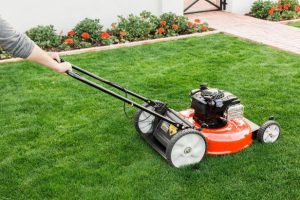 When it comes to cutting your yard, there are a few key steps and considerations to keep in mind to achieve the best results. Here’s a general guide:
When it comes to cutting your yard, there are a few key steps and considerations to keep in mind to achieve the best results. Here’s a general guide:
-
Prepare the lawn: Remove any obstacles such as toys, rocks, or branches from the yard before you start. This will prevent damage to your lawnmower and ensure a safe mowing experience.
-
Choose the right mower: Select a lawnmower that is suitable for your yard size and terrain. For small yards, a push mower might be sufficient, while larger yards may require a self-propelled or riding mower.
-
Adjust the cutting height: Set the cutting height of your mower blades according to the recommended level for your grass type. Generally, it’s best to remove only one-third of the grass blade’s height in a single mowing session to promote healthy growth.
-
Mow when the grass is dry: Mowing wet grass can lead to clumping and uneven cuts. Aim to mow when the grass is dry to achieve cleaner results.
-
Plan your mowing pattern: Start by mowing the perimeter of the yard first, then work your way inward in a systematic pattern. This prevents you from repeatedly running over areas and ensures even coverage.
-
Overlap your passes: To avoid missed spots, overlap each pass slightly with the previous one. This will help ensure that you mow the entire yard evenly.
-
Mind your speed: Avoid rushing while mowing. Maintain a steady pace to achieve consistent cutting and prevent scalping the lawn.
-
Consider grass clippings: If you have a mulching mower, consider leaving the grass clippings on the lawn. They act as a natural fertilizer, returning nutrients to the soil. If you prefer a neater appearance, collect the clippings with a bagging attachment or rake them up afterward.
-
Trim the edges: Once you’ve finished mowing, use a string trimmer or edger to tidy up the edges along sidewalks, driveways, and flower beds. This gives your yard a clean, polished look.
-
Clean and maintain your equipment: After mowing, clean your lawnmower, remove any grass clippings, and check the blades for sharpness. Regular maintenance ensures optimal performance and longevity of your equipment.
Remember, these steps serve as general guidelines. Specific recommendations may vary depending on your grass type, climate, and personal preferences. Always consult the manufacturer’s instructions for your lawnmower and consider any unique requirements for your particular yard.














